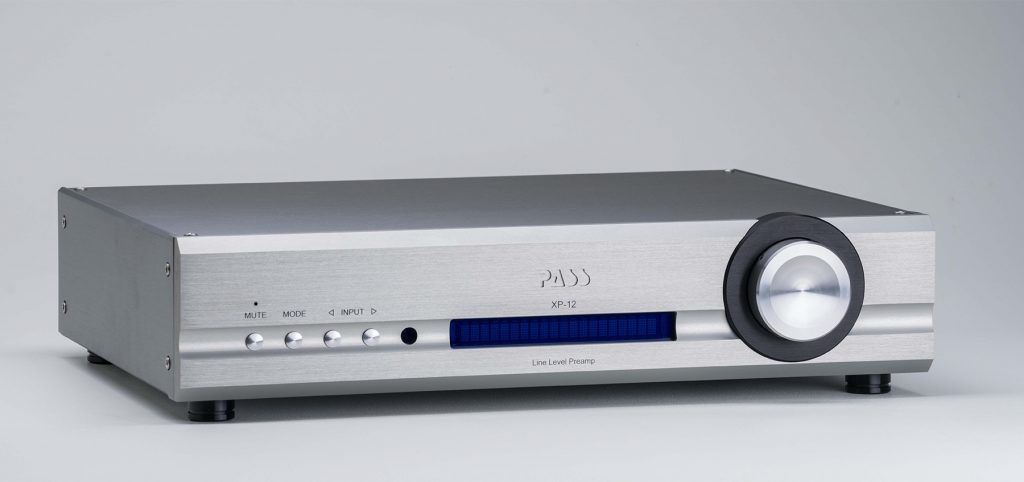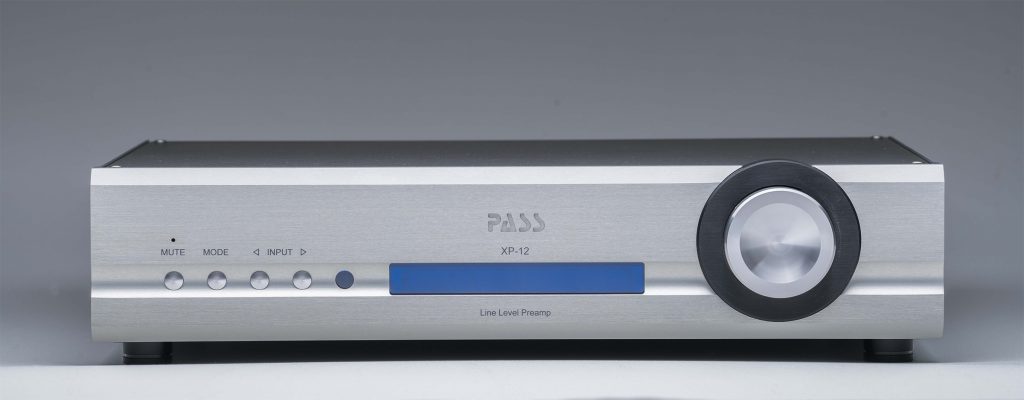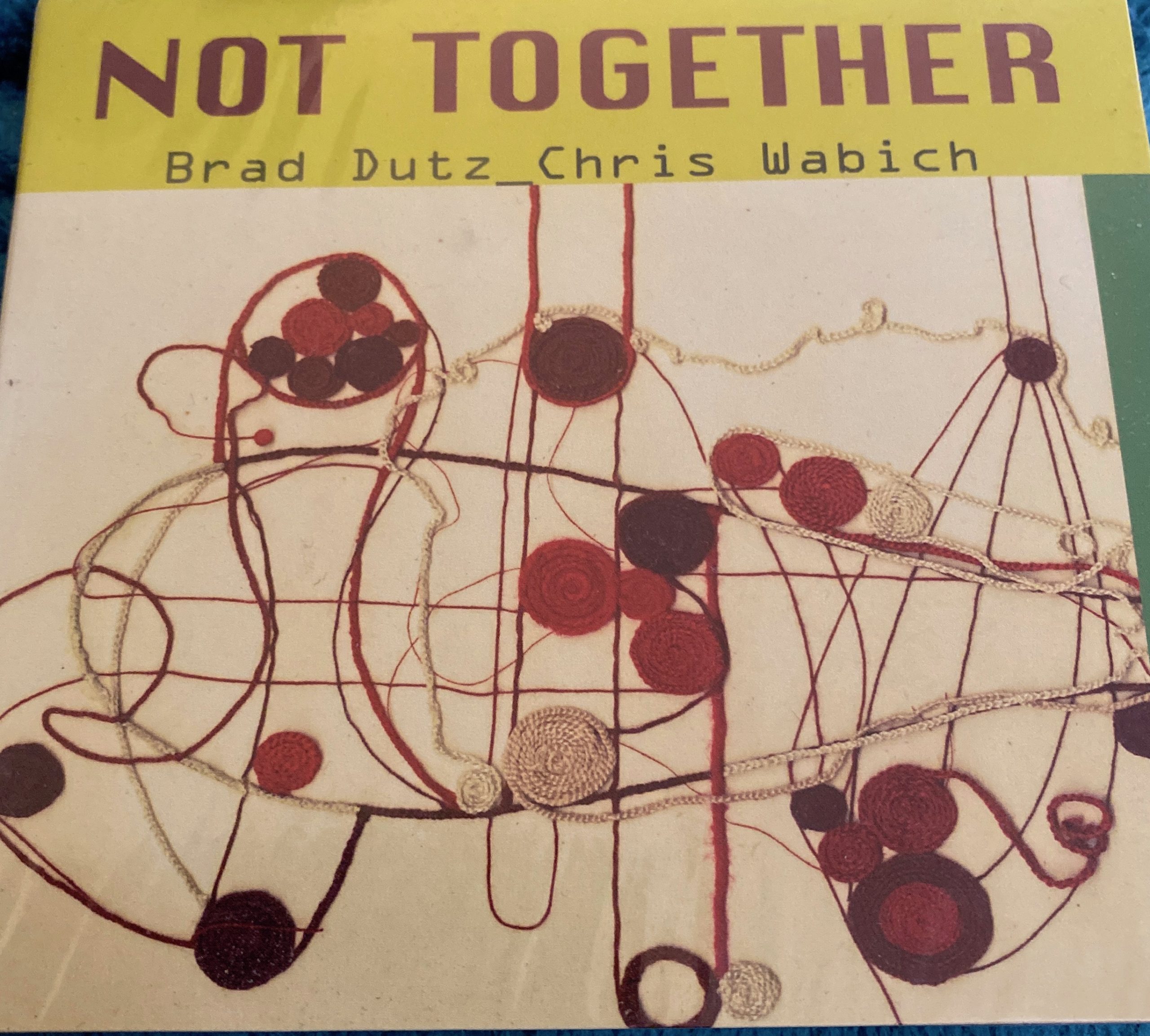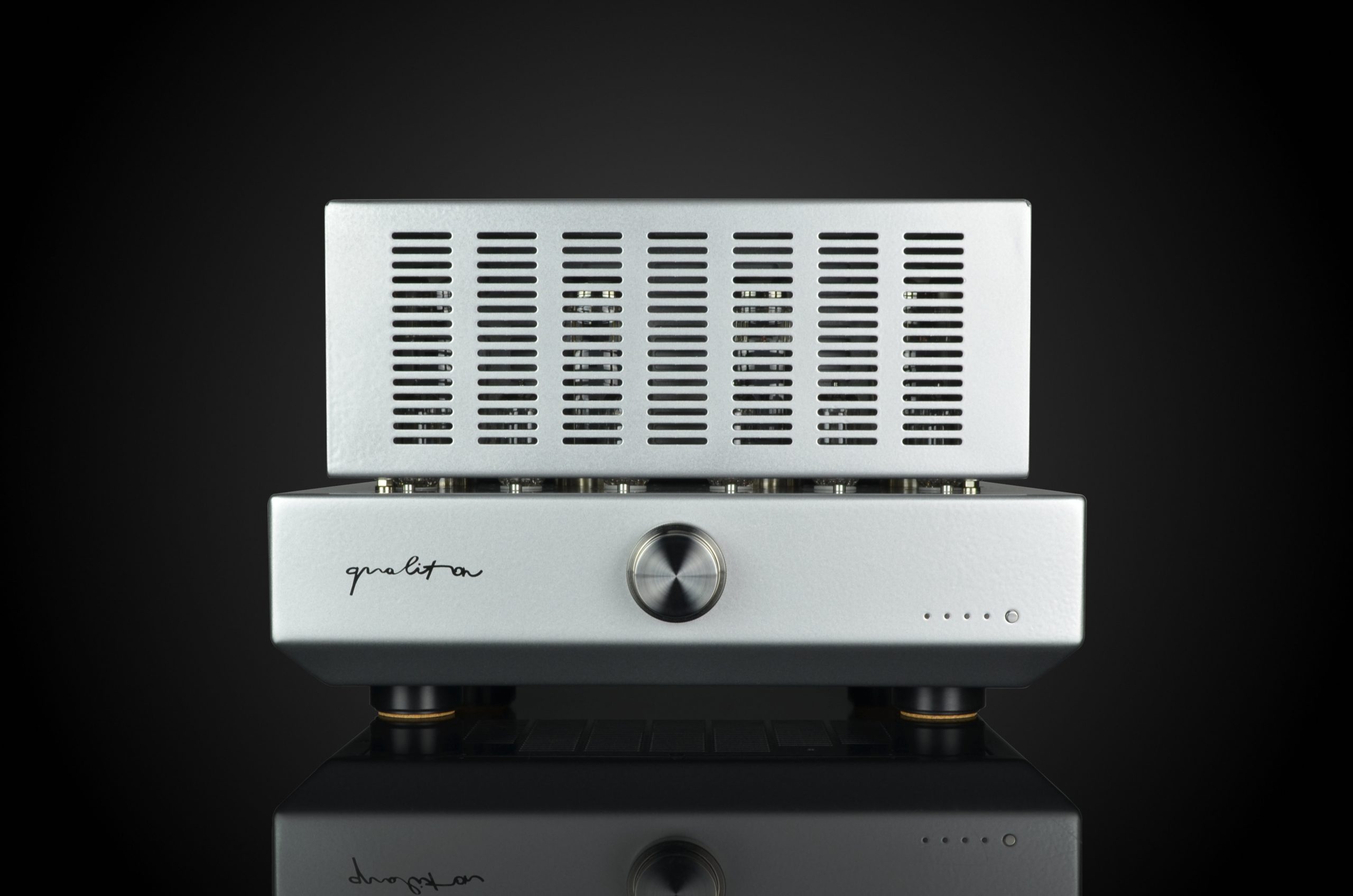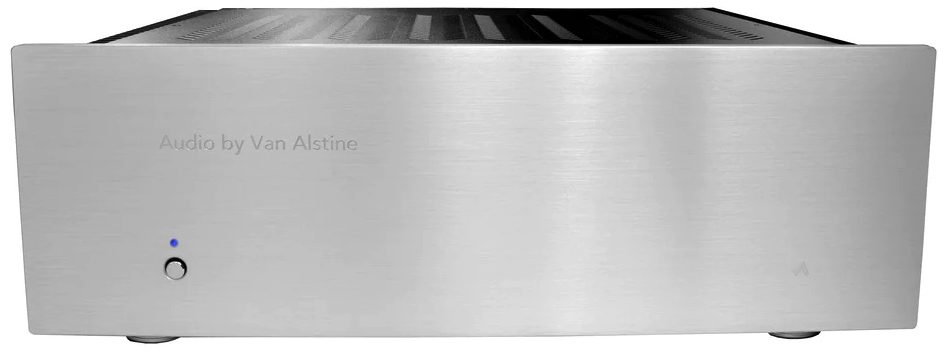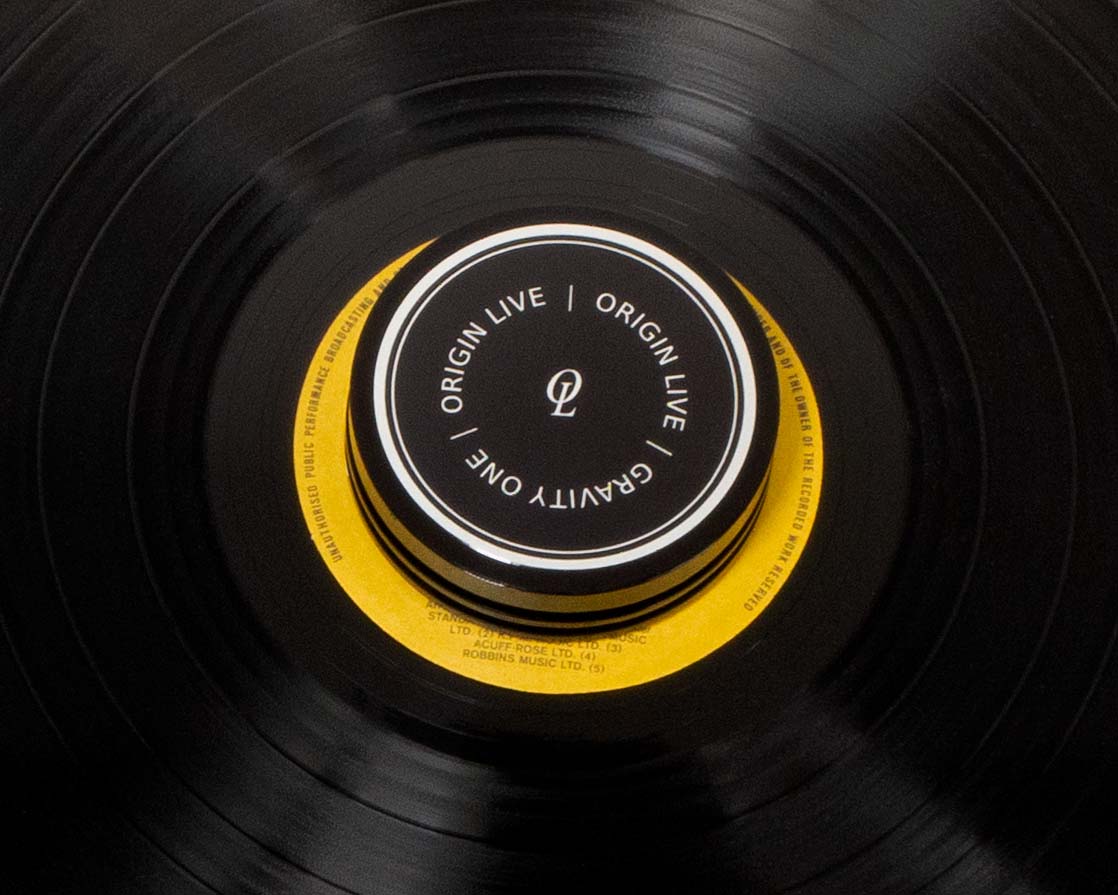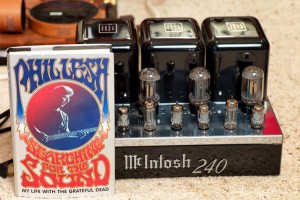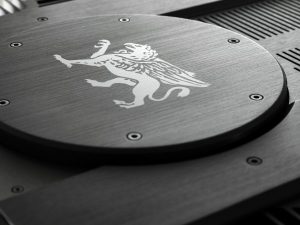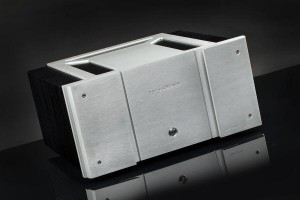Prologue
I used Pass Labs' XP-10 as a reference preamplifier for most of 2017. I had no problem distinguishing it from my previous reference, a circa 1995 YBA Alpha 1 linestage. The XP-10 was more relaxed in the midrange and had every bit as much detail while forming more realistic renderings of bass depth and register while still serving a more suave treble. The bass reproduction allowed me to hear quite clearly I'd been living with "one note bass" with nearly every preamplifier I've used previously. I sold the YBA because of the XP-10's delta in performance.
I struggled to characterize the sound of the XP-10. Surely there was a signature to it, but it was not evident to me. My speakers tend to be cruel to match and so I tend to be "forgiving" in appraising gear. The XP-10 was a good match with my speakers, allowing different sources to easily show their character. I held on to the XP-10 thinking about buying it, while trying to live a normal life during a tumultuous personal period.
Photo Courtesy of Pass Labs
First step out the door
When 2017 ended and I was ready to take the leap, Pass Labs' Desmond Harrington offered to send the XP-12 before I committed to the XP-10, as buyer's remorse is a painful love letter to read. Did I want to? Not really. In fact, though I'd previously asked to review the XP-12 when it became available, I was wondering if it was bad form to ask to bow out. Monogamy doesn't work when you're dating outside the relationship, if you know what I mean, and if the XP-10 worked well with my system..., surely it would be foolishness to try another preamplifier. But, if being an audiophile doesn't bear the markings of foolishness, then surely an audiophilish reviewer bears such markings writ large. I've owned my speakers, previous preamplifier and turntable, each for more than ten years which I assert argues for being a monogamist, but I am merely a repeat repenter audio-slut. But the XP-12 whispered in my ear and... .
The XP-12, like its predecessor, plays at the entry level of Pass Labs' line stages, though $5800 is a high entry level. The newer preamplifier, like its progenitor, also has five inputs, three of which are balanced, one of which can function as a home theater bypass. Source and volume can be selected from the front panel or using the substantial remote control. For more on its functions and features read my note on the XP-10 (HERE), which does not differ ergonomically from the XP-12.
Photo Courtesy of Pass Labs
The XP-12 has a new power supply that utilizes an electrostatic shield and a mu metal shield. As a lay person, it appears these two work to block the effect of an electric field, both external static and non-static. It also uses a single stage volume control that shares elements with the Pass $38,000 XS line preamplifier. Sharing technology with a product priced nearly seven times higher would appear to bode well for an "entry level" preamplifier, even at this price. I imagine that some of these features play into the "sound" of the XP-12. Visually, aside from the silk screened XP-12, I noted no differences between the two preamplifiers.
AND . . . So What?
I imagine you might be reading this note wondering if the XP-12 sounds better than, the same as, or not as good as the XP-10. And the answer is yes, yes and... . For those that want the Wikipedia answer, the XP-12 seems a distinctly more refined preamplifier with a yet finer granularity—or so I imagine as I hear no granularity with either. Granularity is perhaps the wrong word here, as that implies a detectable granule, and I did not note any. Perhaps it is instructive to say its liquidity was less viscous and obscuring? Think of the XP-12 as better educated, more refined, and more worldly if you will. It sounds very similar to the XP-10, but the Stygian and cavernous bass of the XP-10 is less immediately evident—it remains, but it walks through the door more surreptitiously until thundering feet announce themselves.
Metaphorically, one might say the XP-12 is Catherine Denueve to the XP-10's Raquel Welch, both very attractive in different ways, with the latter having more... obvious charms. The slightly more "obvious" bass characteristic of the XP-10 will appeal to listeners who partake of electronic music, which features deeper bass than acoustic instruments produce. And, the point of deep bass in electronica is to be noticed and experienced as force, which might give a nod to the XP-10. It occurs to me the bass performance is as good with the XP-12 as with the XP-10, but it's just not as obvious. However, for those inclined toward acoustic instruments and their realistic reproduction, both would be great with me giving a nod to the XP-12.
I plugged the XP-12 in for a few days to warm up before listening. The first thing I noticed when the XP-12 sent a signal through my system was that it seemed quieter, literally a lower volume level. Both preamplifiers register an output level, from 1-99, whatever gradations that denotes. Whereas I often listened to the XP-10 in my large room with the display showing volume between "50" and "60," I found the XP-12 playing between "60" and "70," experiencing the sound levels as equivalent. The XP-12's quiet wasn't necessarily blacker backgrounds... or was it? That's not how it registered to me, but it produced a quiet that fostered more nuance in emotional expression.
If you liked the XP-10, and I think many would, you'll probably love the XP-12 more, but not for obvious reasons. Where the XP-10s bass was cavernous with slam, the XP-12 is more nuanced and even harder to pin down - perhaps owing to my source components. If you like a grainless, slightly sweet sound, or a preamplifier with the capacity to sound sweet, then the XP-12 could be yours. If you're looking for a meaty physical presentiment in your listening room... you'll probably want thermionic devices burning in your preamplifier.
I started listening with a favorite track of mine from Pink Martini, with Storm Large singing in place of China Forbes on "Pana Cand Nu Te Iubeam" through my LampizatOr Euforia DAC. Forbes is the more nuanced singer, and Large the more powerful and less subtle rock singer. Through the XP-12, Large takes in a little ground on Forbes' subtlety.
Whereas the first time I heard Large sing this fabulous/ridiculous treatment of a Romanian song, I nearly laughed through a barfing reflex only to stop, in suspense whether the song would collapse in horror or rise to a resplendent finish. The XP-12 presented Large's efforts as more nuanced, more intelligent and less ridiculous than the XP-10. Ever notice how much more communication happens with smart people?
Please note that the sonic differences were subtle; rather than an obvious character being exposed, the experience was simply more nuanced, like a slightly better eye glass prescription or a better articulated idea. It should be noted, again, the XP-12 and the XP-10 sound very similar, perhaps what I perceived was a drop in self-noise which seemed to allow more information through. Gosh, it's like Large became more artful or... was she artful before and the electronics hid her artfulness?
So, on to my familiar refrain about my reference system and my powered speakers which often, but not always, are "just the facts ma'am." ATC speakers are like really smart people lacking the last of social graces—if you say something foolish, well, be prepared to hear the ATCs speaking that foolishness. For ATC enthusiasts, I'd say both the XP-10 and XP-12 are good matches. They both have the social graces to make ATC speakers occur as nuanced, dynamic, and at least one less veil closer to a live event.
The combination of the XP-12, the LampizatOr Euforia DAC, and my ATCs was nice, not quite tubey in a balance teetering between sweet and hard; depending on the recording. This iteration of my system exhibits my apparent pursuit of a "transparent sound." What that means to me at this juncture, rather than when I first bought the LampizatOr, is that my system has tended toward "lean" and without so much body, warmth, and forgiveness. Some non-audiophile friends found the presentation breathtaking. For me, initially and for at least two years, it was a kind of realistic, liveness—this is my abbreviation of an "absolute sound." Compared to live music... it lacked a bit of warmth, but some warm systems don't conjure up a "you are there" experience, either. So...
Enter the Prism Sound Callia. The Callia, like ATC, have their provenance in the studio world. I've heard the Callia with ATC at shows and was... not terribly impressed nor disappointed. It was "okay" to me, and either exciting or disappointing to others. Some have complained that the Callia is borderline analytical to the point of distraction. Well...
After listening to a gob of other music through the LampizatOr, I inserted Prism Sound's Callia DAC. Ouch! The XP-12 immediately let me hear the LampizatOr's and Callia's characteristics. Most audiophiles seem in pursuit of every recording sounding beautiful all the time. If recordings were uniformly beautiful, well that would make sense, but not every recording/performance/artist produces beauty; if your system makes every recording beautiful... well, your system is adding that "beauty" (coloration) to every song. Sure, Samuel Barber's famous "Adagio" should sound beautiful, but the Clash's "London Calling"?
In my system, the combination of the XP-12, ATC 20-2A speakers, and the Callia was warm and rich. It was neither romantic nor analytical, though if I had to assert a direction, it's a bit more like the latter. It was largely invisible to my listening habits. Putting "Pana Cand Nu Te Iubeam" back on revealed a yet warmer, more artful Storm Large. Through the Callia, Large again became more artful, more nuanced, and a singer with more apparent talent (intelligence?). In part Storm's improved performance arrived with a fuller bodied midrange tone from the Callia that the XP-12 let warm up my listening room. This does not mean the Callia will provide warmth to most systems, but to mine, it certainly did.
In comparison to the Euforia, the Callia obscured some detail, while bringing in more life, warmth, and weight. You could call it a less transparent and more realistic rendering of the human components of music. Who said reality isn't filled with paradoxes.
Near the end of my writing this review three new "sources" arrived, the first, Schiit's Gungnir Multi-Bit ("Gumby"), and two phono stages, Channel D's Lino phono, as well as Margules Audio's FZ47DB.
The Gumby entered primarily for a headphone review. However, I co-opted it for my "big rig." The Gumby sounds a little more like the Callia than the Euforia, in terms of tonal richness and timbre definition. If the Euforia is fast and a little lean, the Gumby is fast, vibrant, and full-bodied. The Callia's PRaT (not something I normally pay attention to) is lacking, where the Gumby is fleet of foot with what I might call a coiled spring presentation—a bit more bouncy and vibrant without stumbling into a "zingy" sound. Remember, my comments here are in the context of my system and room which will not necessarily sound the same in your room.
Hearing the Callia in my system had me sell my Euforia. I mean that quite literally. The Euforia is a very good DAC, but I want my system to have a bit more warmth and "gentility." In a gentler system, the Euforia is excellent. I would be hard pressed to say how I would choose between the Callia and the Gumby—both were very nice. Family health issues were too destabilizing for me to want to choose, let alone choose one as superior to the other. As an aside on the two DACs, they're both solid performers. Neither had an overwhelming character to preclude them as a choice for me. In my experience, neither was analytical.
The Lino and Margules sound similar, for the most part. The Lino, however, has the gain I need for my cartridge. The Margules is designed for MM carts rather than my low output MC, 0.23mV. The Lino's greater signal amplification yielded a combination of superior unrestrained dynamics and a reasonably warm tonal balance that exceeded the Margules' superior tonal balance and inferior dynamic range. Channel D's Lino, paired with about $10,000 of analog front end was a fuller, broader spectrum sound—digitized—with a "charge" to the sound somewhere between the Callia and the Euforia. With a better analog front end, the XP-12 was more nuanced and emotionally evocative, suggesting the XP-12 has a yet higher ceiling than my digital setup showed.
Complaints
My nits are few and I really only have one complaint. The remote control. The XP-10 and XP-12 use the same remote. I've gotten fairly familiar with it over nearly a year's worth of listening. I know where most of the buttons are. The very solid remote has no backlighting, or any visual aids for buttons. You'll either need a separate light to navigate it, or memorize its layout to use it without looking. On a very few occasions I've accidentally hit the "bypass" button which sends the volume to its FULL setting. Uncontrolled loud blaring out of my system is a very different loud than one in which the user steadily raises the volume. So... care is needed not to activate the bypass feature—as Pass do in their manual. Just words to the wise.
If you're looking for a tube preamplifier with the frequent sort of voluptuous sound... the XP-12 isn't it. While "neutral" sometimes conjures up a lean, if not neutered sound, the XP-12 isn't either of those. If, and this is a big if, it has a coloration it's on the slightly feathery sound, closer to a water color sound than an oil painting in terms of timbre and tone, but I'll push back on the notion that it's lean or edgy in any way. There isn't a hair of harshness in the Pass preamplifier—it will let harsh recordings, partnered equipment show itself—and errs on the slightly forgiving side of things, which probably makes partnering easier. But, if your system leans toward edgy the Pass will not place a euphonic bandage on it.
Conclusion
As I wind down here, I see that rather than tying my impressions into a neat knot, I want to expand on my comments again. And that says a lot about the XP-12. Its signature is not easy to articulate, though the experience of it is easy to enjoy. If you're looking for a thick, full bodied, even viscous sound the XP-12 is not that. You'll hear what your sources and speakers bring to the party. My powered speakers are not often genial dance partners, but they partnered very nicely with Pass' XP-12, so that bodes well for other systems. Think of a light, deft touch with a measure of invisibility that allows a system to sing—or not—depending on what the XP-12 is partnered with. While it's their entry level preamplifier, Pass Labs' XP-12 can open the door to a lot of vistas without much experience of veils, glass and certainly no lumpy frequency response distortions. To my ears Pass Labs' XP-12 is terrific. I highly recommend the XP-12 as a terrific foundation for building a system that is contoured to your tastes.
XP-12 Preamplifier
Retail: $5800
Pass Labs




